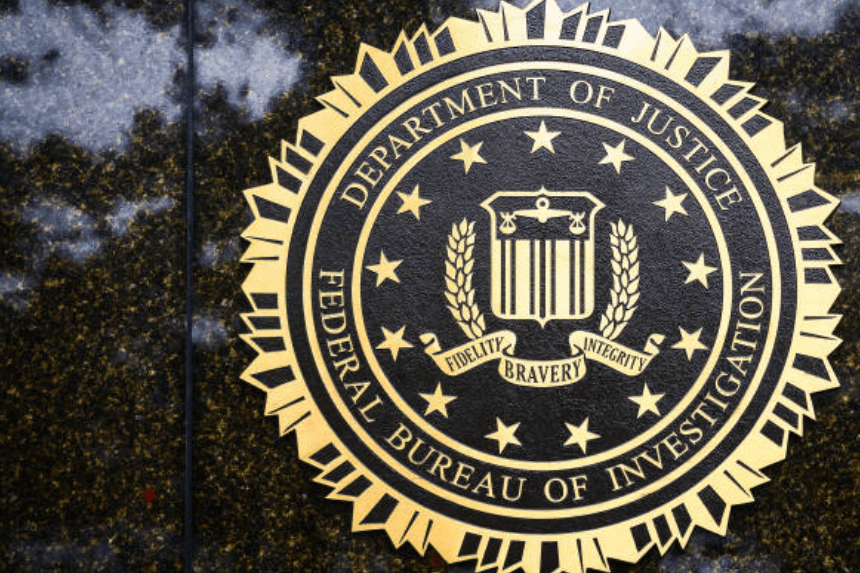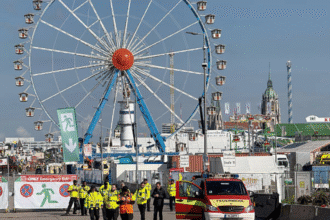The FBI says that the suspect involved in the flamethrower and firebomb attack at a peaceful rally in Boulder, Colorado, had planned the assault for more than a year. Elderly Jewish people were intentionally attacked in the act, and this resulted in injuries to several people, one of whom was a Holocaust survivor. Police uncovered evidence of antisemitism and careful planning, which proved the attack had been planned. The alleged shooter was said to coordinate the attack with a personal event, which indicates clear intent. Law enforcement has said that this case is being investigated as a hate-inspired act of domestic terrorism.
- Why Did a Peaceful Rally in Boulder Turn Violent?
- Who Was Behind the Attack and What Were His Motives?
- How Was the Attack Carried Out?
- What Evidence Did Investigators Uncover?
- What Charges Has the Suspect Been Hit With?
- How Has the Community Reacted?
- What Are the Broader Implications for U.S. Security?
- Can Such Attacks Be Prevented in the Future?
- What Happens Next in the Legal Process?
- Final Thoughts: What Does This Attack Teach Us?
Why Did a Peaceful Rally in Boulder Turn Violent?
In Boulder, Colorado, what started as a joyful afternoon for a community became a shocking tragedy when hostages in other countries began calling for support. Brutal violence was directed at elderly people, several in their 70s and 80s, as well as a survivor of the Holocaust. Molotov cocktails and a handmade flamethrower allowed the attacker to set people on fire and make the area panic.
Around 9/11, authorities listed the incident as planned and deliberate. For over a year, the suspect, age 45 from Colorado Springs, had prepared for the shooting that took place. He delayed the assault until right after his daughter graduated, which suggests he planned the attack. It is being called one of the most disturbing examples of premeditated domestic terrorism we have seen in years.
Who Was Behind the Attack and What Were His Motives?
An immigrant from Egypt, who used a tourist visa to enter the United States, was reported as the suspect in Colorado’s firebombing. Even though there was an asylum application on file, his visa ended long before he could apply, so he had been living in the country illegally. In the beginning, neighbors thought he was harmless, but authorities later found a huge amount of antisemitic content, many handwritten notes, and evidence of his plans to attack massively.
While in custody for interrogation, he expressed his strong dislike for the Jewish community, and he spoke about his actions without feeling any remorse. Sources in law enforcement say he told them he would commit the murder again, given the chance. The terrorist used the attack to say he was acting in defense of global issues, combining international struggles with everyday hatred.
How Was the Attack Carried Out?
The suspect pretended to be a gardener and threw two Molotov cocktails at people who were at the rally. He turned on a flamethrower made from a pressure sprayer and xylene, which is extremely combustible. Praying hands quickly set several people on fire, and calls of “Free Palestine” and similar messages against Israel filled the air.
People there ran to put out the flames and help the hurt, as some of those injured had serious burns. After all was said and done, police found more than a dozen Molotov cocktails that the suspect had not used. It became even more certain that the purpose of the attack was to create a high number of casualties. Read another article on Hybrid Warfare in Germany
What Evidence Did Investigators Uncover?
When authorities looked through what the suspect owned, they discovered materials that made it clear the attack was planned. Some of the items found with him were 14 Molotov cocktails, a map showing the rally site, and texts full of attacks on Jews and Israel. Experts found records writing about all the steps the terrorists intended to take, along with information and studies on former terrorist incidents. The evidence provided was enough for the government to call it a hate crime and domestic terrorism. Even though the suspect acted on himself, authorities stressed that his motive was radicalization.
What Charges Has the Suspect Been Hit With?
The suspect is accused of many severe offenses, such as committing a federal hate crime that injured others. Eight counts of attempted first-degree murder and six assault charges directed at seniors are how the state describes the indictment. It has also been claimed that he is involved in using and carrying devices meant to cause fires and destructive damage, same with first-degree arson and terrifying people out of religious motives. If found guilty on every charge, the suspect might be given many life sentences. Prosecutors are focused on the case, saying that what the suspect confessed to and their detailed planning show that they acted with the intent and motive required.
How Has the Community Reacted?
Afterward, people in Boulder have shown courage as well as anger. Several vigils were held, and thousands came together to express support for the victims. Anyone who went through the incident can receive medical care for burns as well as support for any trauma they may have faced, and their families get access to mental health services.
Leaders from the community, religious groups, and civil rights supporters have worked to join people in response to hate. Further security has been added to houses of worship, and various community organizations are helping police to set up better ways to respond to threats.
What Are the Broader Implications for U.S. Security?
The attack has prompted people in the United States to again consider the threats of domestic terrorism and how modern international conflicts might overlap with hate crimes. Many senior officials point out that the ideological influence of the suspects is easily found on the internet and usually remains unmonitored.
It has pointed out problems in how immigration officials enforce rules and monitor visas. Many are calling for stronger rules around visa overstays and claimed asylum, since they believe the attacker’s expired visa should have caused concern well before the incident.
It also highlights that making improvised weapons with simple things is getting more common. It has been advised for law enforcement agencies to watch out for possible uses of chemicals and tools for future crime.
Can Such Attacks Be Prevented in the Future?
Although the future cannot be known for sure, applying certain strategies can reduce the chances. Focusing on public awareness is very important—promoting reporting of suspicious things in both online and face-to-face gatherings can help us all. Authorities ought to introduce systems to watch over people whose visas have expired or who are waiting for an asylum decision. If education and mental support are offered through special counter-radicalization programs, it may prevent at-risk persons from becoming dangerous. Adding trained workers, checking traffic, and keeping an eye on areas with cameras make events more secure. Higher federal investments in training, involvement in local communities, and new technology used against hate crimes can help greatly in prevention. Using these steps, law enforcement and the community can do more to prevent similar incidents from happening.
What Happens Next in the Legal Process?
The suspect has been remanded without bail pending the beginning of the court proceedings. Both state and federal prosecutors are combining their efforts to get strong sentences. Those who are hurt and their families receive assistance both for the legal process and the healing phase.
The legal system has the difficult assignment of handling cases about terrorism, hate crimes, illegal immigration, and community safety. People across the country are likely to follow the trial, and the outcome may set rules for how similar cases are handled in the future.
Final Thoughts: What Does This Attack Teach Us?
The Colorado flamethrower attack, a horrifying event in Boulder, serves as a sobering reminder of how hate and extremism can manifest violently, even in places once considered safe. It also reflects the ongoing need to balance community openness with enhanced security measures. The victims, many of whom were elderly and attending a peaceful rally, symbolize the innocent lives so often impacted by political and ideological violence.
But this tragedy also presents an opportunity—a moment for communities to unite against hate, for policymakers to strengthen protections, and for all citizens to reaffirm their commitment to peace, tolerance, and vigilance.








